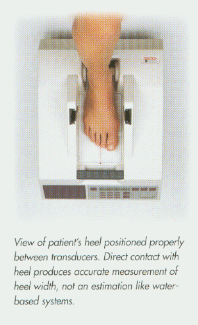 What is Osteoporosis?
What is Osteoporosis?
Bone is a living tissue: a honeycomb of protein and collagen fibers that are hardened by mineral deposits. The human skeleton is completely remodeled every seven years. Up until the mid 30’s, the human body generates new bone faster than it consumes old bone cells. This increases bone mass, or bone density. Osteoporosis is caused by an imbalance in the cycle known as “remodeling”: the process that releases calcium into the blood and maintains the skeleton. Osteoporosis is painless in early stages, so most people are completely unaware of their condition until a fracture occurs. Osteoporosis can be prevented, detected, and treated. It is not an inevitable fact of aging.
Risk Factors
• Gender (women have a 200% greater risk)
• Early menopause
• Diabetes
• Kidney or liver disease
• Age
• Excessive drinking
• Smoking
• Family history
• Lack of exercise
• Inadequate calcium intake
Osteoporosis Facts
· Osteoporosis and related bone disorders affect 28 million Americans- 80% of whom are women.
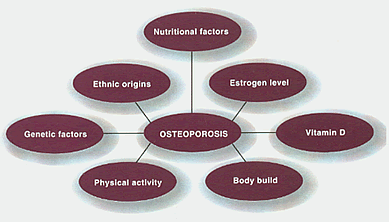
· A woman’s risk of hip fracture alone is equal to her combined risk of developing breast, uterine, or ovarian cancer.
· Osteoporosis related hip fractures are the leading cause of hospital bed utilization.
· 20% of all hip fracture patients die within one year after fracture.
· 50% of hip fracture survivors require some form of assisted living.
· 77% of those with osteoporosis are undiagnosed and untreated.
· 30 million Americans are affected by diseases treated with corticosteroids, a class of drugs knowto cause rapid and severe bone loss
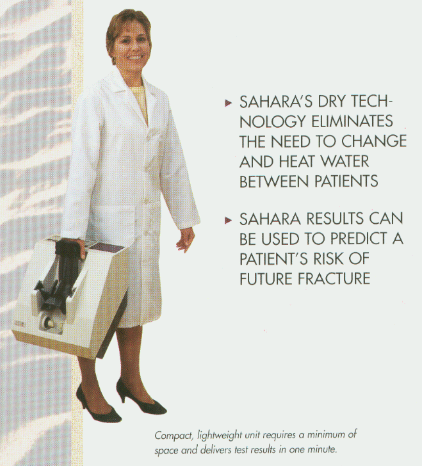
How we can help…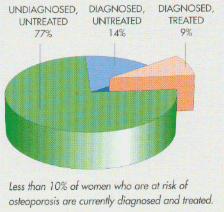
Abnormal bone mass density may suggest a risk of osteoporosis. The heel is used as the measurement site because it is a weight bearing bone, the same type of bone is found in the hip and most accurately predicts the level of bone brittleness. A T-score indicates the standard deviations from the norm.
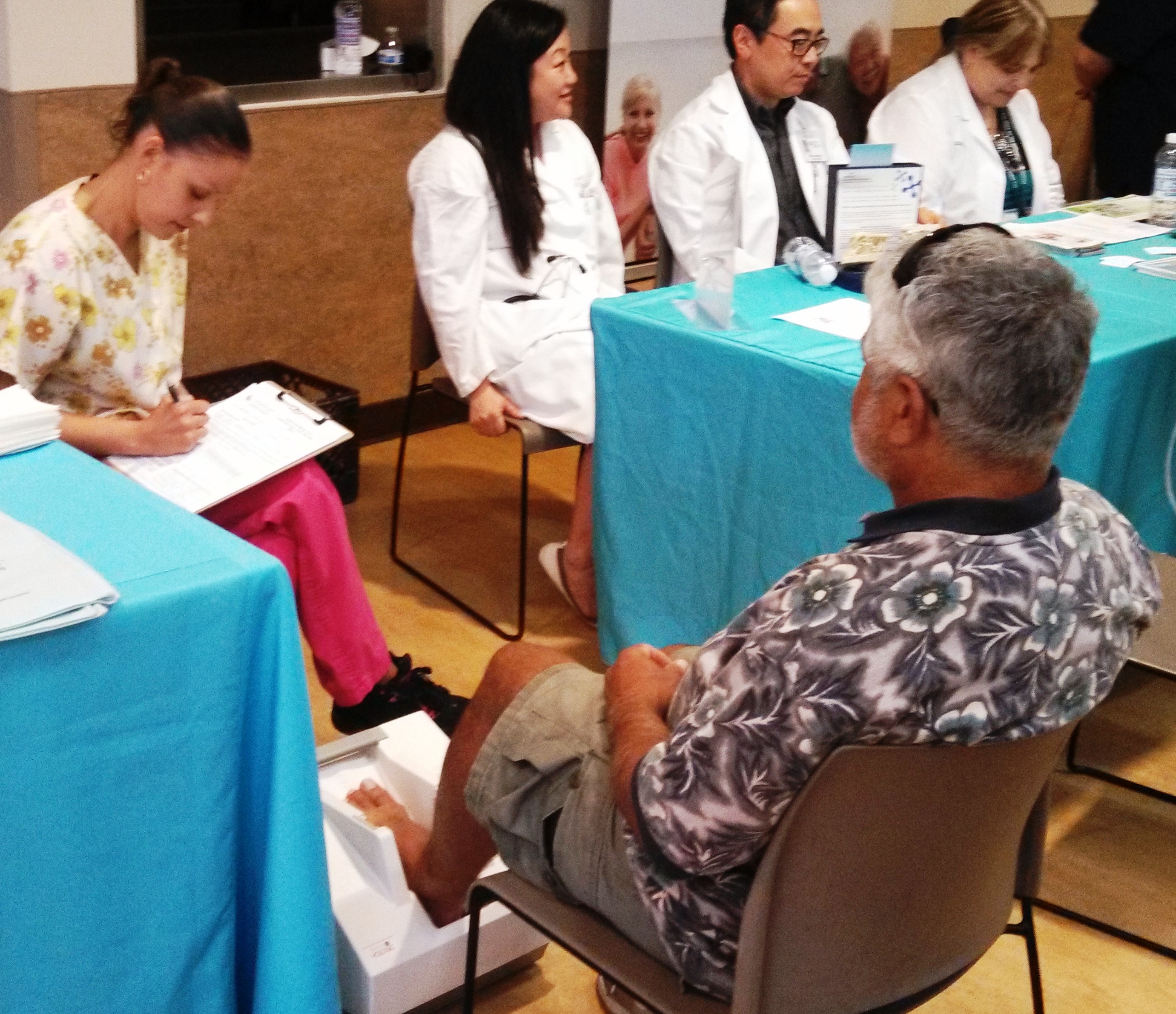
Our technologist performing a Bone Sonometry screening examination
